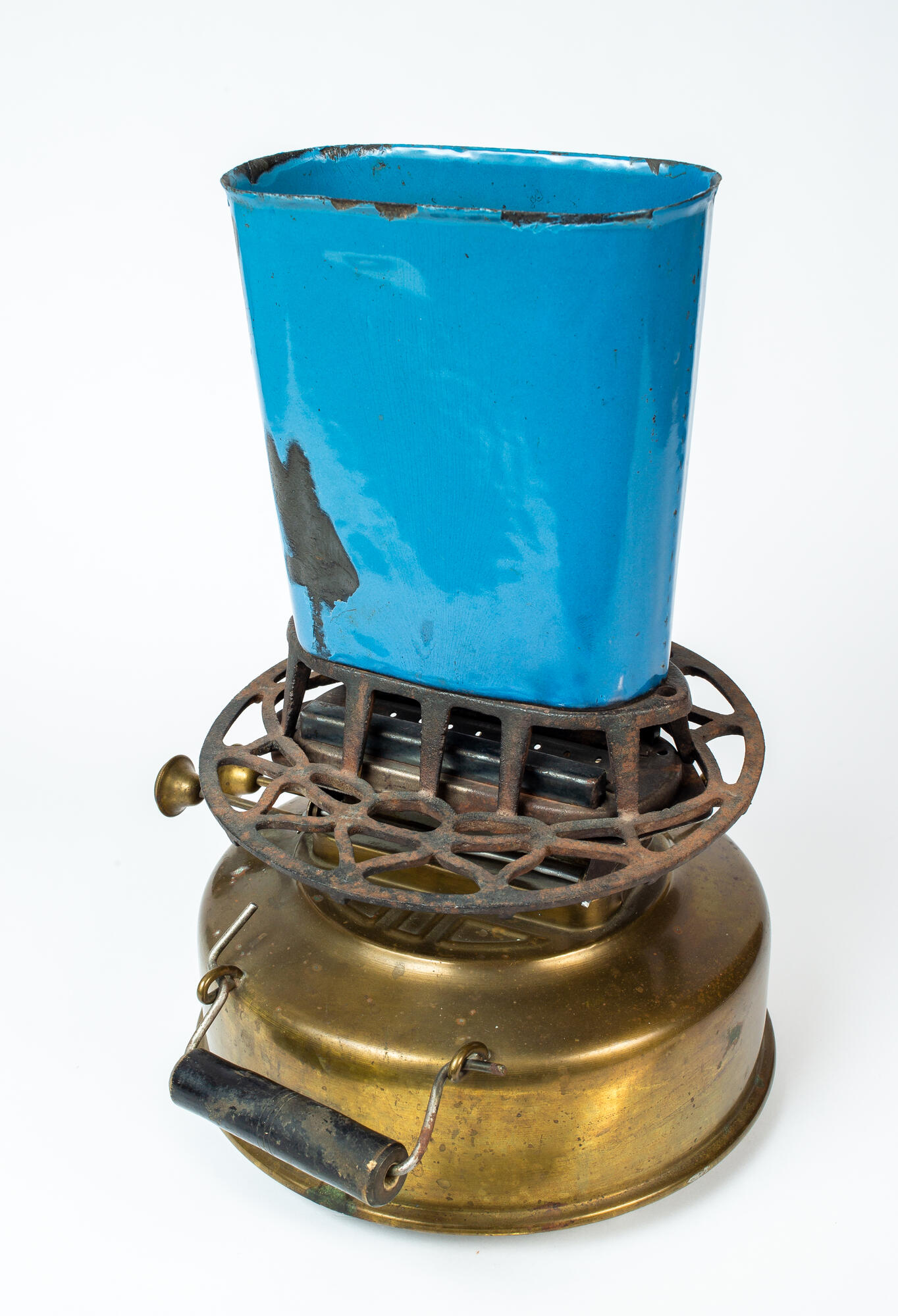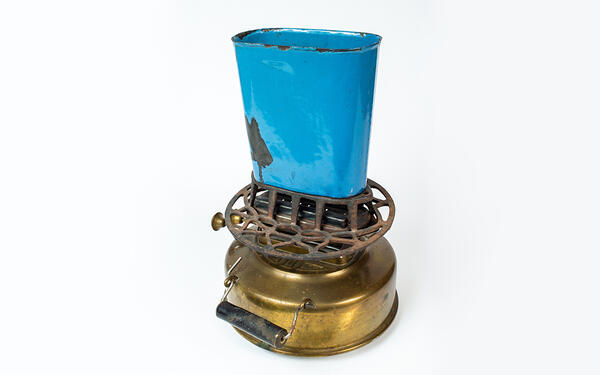The Primus stove is a type of a heating device without a wick that runs on gasoline or kerosene. It was used to cook food or boil water. The Primus stove from the collection of the Verkhnyaya Pyshma museum used to belong to Marina Serzhenkina, who lived in Sverdlovsk in the 1930s.
The device appeared in 1892. The first sootless and smokeless kerosene stove was designed by the Swedish mechanic Franz Wilhelm Lindqvist. The new device got the hottest at the least amount of time compared to all the other devices known at the time.
Lindqvist began selling his stoves to his friends and neighbors and soon opened his own company called ‘Primus’ with the device receiving the same name.
The Primus stoves quickly became popular: there were no microwave ovens at that time, so the idea of taking three to four minutes to boil water or quickly fry meat was new to the Swedes. Later, the company began to sell products abroad.
The device was small and simple, but some experience was needed to use it. To light the primus stove, it was necessary to pour fuel into the bottom tank, then pump the air inside and warm up the burner — without this step, the gasoline would not vaporize. After that, it was necessary to open the fuel supply from the main tank and watch the flame. Lighting the Primus stove was mostly a man’s job in the family.
The devices also had a drawback: they often broke down. Special repair shops appeared in different countries, including Russia.
The USSR began to produce Primus stoves in 1922. The first manufacturer was a copper-processing plant (now it is CJSC “Kolchug-Mitsar”), in the city of Kolchugino, Vladimir region.
Gradually, Primus stoves were replaced in everyday life by burners that operated on liquefied gas and had replaceable cylinders. They were easier to maintain and heated up faster. In addition, multi-fuel heating devices entered the market, which worked on both gas and gasoline.
Nowadays Primus stoves are popular only among hikers since the devices are small in size and heat well. People often take them on hikes and expeditions. The “Primus” company still exists in Sweden and produces portable electric cookers.
The device appeared in 1892. The first sootless and smokeless kerosene stove was designed by the Swedish mechanic Franz Wilhelm Lindqvist. The new device got the hottest at the least amount of time compared to all the other devices known at the time.
Lindqvist began selling his stoves to his friends and neighbors and soon opened his own company called ‘Primus’ with the device receiving the same name.
The Primus stoves quickly became popular: there were no microwave ovens at that time, so the idea of taking three to four minutes to boil water or quickly fry meat was new to the Swedes. Later, the company began to sell products abroad.
The device was small and simple, but some experience was needed to use it. To light the primus stove, it was necessary to pour fuel into the bottom tank, then pump the air inside and warm up the burner — without this step, the gasoline would not vaporize. After that, it was necessary to open the fuel supply from the main tank and watch the flame. Lighting the Primus stove was mostly a man’s job in the family.
The devices also had a drawback: they often broke down. Special repair shops appeared in different countries, including Russia.
The USSR began to produce Primus stoves in 1922. The first manufacturer was a copper-processing plant (now it is CJSC “Kolchug-Mitsar”), in the city of Kolchugino, Vladimir region.
Gradually, Primus stoves were replaced in everyday life by burners that operated on liquefied gas and had replaceable cylinders. They were easier to maintain and heated up faster. In addition, multi-fuel heating devices entered the market, which worked on both gas and gasoline.
Nowadays Primus stoves are popular only among hikers since the devices are small in size and heat well. People often take them on hikes and expeditions. The “Primus” company still exists in Sweden and produces portable electric cookers.



